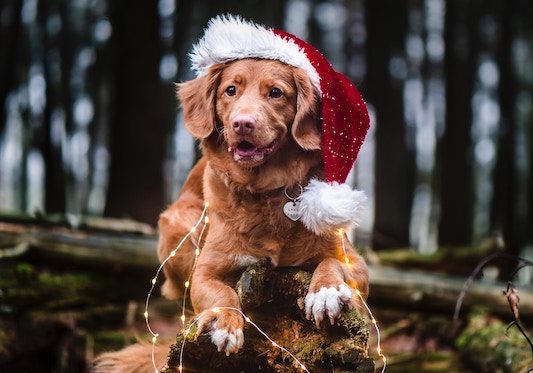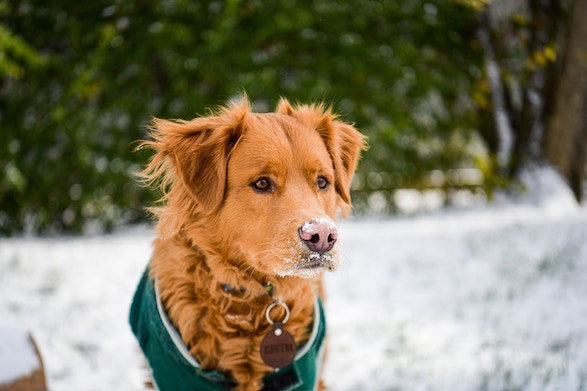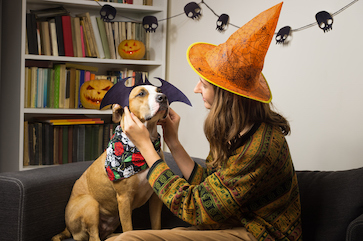Congratulations! You are either thinking about adding a new addition to your home or you recently brought home a puppy! Puppyhood is such an exciting time for dog owners and their companions, but getting through potty training can be scary.
Although potty training can seem daunting, there are many things you can do as a new dog owner before your pup comes home to ensure that your potty training journey is as easy as possible and yes, you read that right, can start before your puppy comes home!
Potty training begins at the breeder.
Most people are surprised to learn that even before puppies have fully developed bladders they can learn essential skills that will transition them easily into a household and set you up for success when they come home.
Reputable breeders typically start taking puppies outside between 5 and 6 weeks of age, well before they even step foot in your house. Additionally, having a separate area for potty inside the whelping pen can also create good habits for your soon-to-be new addition.
What if I’m getting a puppy through a rescue or foster?
Rescuing a puppy is another great option to set yourself up for smooth house breaking. Why? Foster and rescue groups are highly experienced dog owners who have raised multiple litters of puppies and since they live in their home, fosters will not allow puppies to potty in the house because they ALSO don’t want to clean up unnecessary messes! Even if your puppy is from a shelter environment, the staff work diligently to set puppies up for success with housebreaking.
Start Housebreaking as Soon as Your Puppy Comes Home
Regardless of your puppy’s background before they arrived in your care, we recommend starting housebreaking right away when your puppy arrives. To best set your puppy up for success, it is even great to purchase supplies and set up your living space before your puppy walks through the door.
An appropriately sized crate
Crates are a powerful tool for housebreaking your puppy. A plastic/airline kennel is the safest option in general, however a wire crate will work as long as your puppy isn’t trying to chew the wiring. Not only do crates provide a safe and secure place for your pup to go if you need to leave them, but they also help to reduce the chance that your puppy will have accidents when left alone. The crate should be only large enough for your puppy to stand up and turn around. Too much room and a puppy can still use the crate as a bathroom. Since puppies tend to grow quickly, look for a crate with a divider that you can expand as they get bigger!

Leash
Your puppy will need to drag a leash at all times so that if they begin to potty in the house, you can immediately and safely take them outside. A flat six-foot leash is a great option for a leash.
Treats
You will want to have treats on hand or close by to reinforce the behavior of your puppy going to the bathroom outside. We like having a special high value treat that they ONLY get for going potty outside.
Get rid of ALL potty pads. These tend to encourage your puppy to go to the bathroom in the home, and will make it a longer process to potty train them.
Housebreaking 101
Once you have your pup in hand (figuratively!) and all of these items, you are ready to get started on housebreaking! We break down housebreaking into four different steps:
1) Watch and confine/Monitoring your puppy
2) Food and water schedule
3) Reinforcing pottying outside
4) Accidents
1. Watch and Confine – Monitor Your Puppy
Functionally speaking, going to the bathroom is automatically reinforced, which means that just the act of reliving their bladder or bowels will reinforce the behavior. Think about it for you, after a long car ride, a lot of us search for a bathroom to relieve a full bladder! This is why it is imperative when potty training that you monitor your puppy at all times, or “watch and confine.” To achieve this, your puppy needs to be dragging a leash at all times and in sight. You can also tether them in direct sight of you. If you cannot watch your puppy, even if it is only for a moment to go get the mail or to shower, they either need to either come with you, or even better, you can place them into their crate. This puts you in full control of being able to monitor their potty routine effectively.
2. Food and Water Schedule
In general if you follow the schedule we provide below, your puppy should be able to hold their bladder and feces for their age in months plus one hour. For a smaller breed, just go by the months to hour ratio, meaning your puppy can hold it for the number of hours that corresponds to their age in months. So a 3 month old standard goldendoodle on a water and food schedule should be able to stay in their kennel with no accidents for 4 hours. A huge factor in being able to potty train your puppy is to create some predictability and consistency with their bathroom schedule.
To do that, we first recommend not allowing free access to water. Of course your puppy can have water, but by scheduling their water breaks, you can predict when your puppy may need to go next. We recommend placing the water bowl outside (or up on a counter if you are in an apartment) and only allowing your puppy to drink water when you are taking them outside to potty for two reasons: 1) Water stimulates the bladder 2) Your puppy will begin to search out water and ask to go outside to gain access to it, which is the first step in getting them to ask to go outside to use the bathroom. Do not let your puppy drink an entire bowl of water unless you can let them back outside within 30 minutes to an hour. A moderate amount of water when they go outside, and then no water on the way back in will decrease the chances of accidents in the home. In general, if you are going to leave the house, do not give your puppy water within a two hour time frame before leaving. This will help prevent accidents while you’re gone.
For food, general digestion is between 6-12 hours and this increases with age, but keep in mind anytime you feed your puppy, it may stimulate their need to go. We recommend following your veterinarian’s recommendation on how many times per day to feed, however for your first and last meals, you should feed as early as possible, and then as late as possible, no later than that two hour time frame before putting them in the kennel at night. For example, if you go to bed at 10pm, dinner and last chance for water should be at 8pm. Then let them out once more at 10pm and place them in the kennel for the night.
Once you are on this schedule, we recommend not letting your puppy out if they cry overnight. Most puppies can hold it for 6-8 hours overnight based on size, and if you are following this schedule, you should not have any overnight accidents. Instead, they are likely crying for attention. An important topic, but for another day.
3. Reinforce Pottying Outside
When you do take your puppy outside to potty, give them at least 10 minutes to use the bathroom. That way if they get distracted, there is still plenty of time to use the bathroom. When taking your puppy out to the bathroom, we recommend not bringing them around additional stimuli (other dogs, people, etc.) so they are less likely to get distracted. Because puppies get so distracted, once they start using the bathroom, do not say anything to or praise them until they have taken at least one step away after they are finished so you know they are completely empty. Then, offer a puppy party (praise) and three tasty treats, one at a time. Repeat this every time you go outside with them. If they don’t potty and you know they need to go, place them into their kennel for 20 minutes, then offer them another opportunity to go back outside and relieve themselves. Repeat until the puppy has gone to the bathroom.
4. Accidents
If while you are watching your puppy, you catch your puppy having an accident inside the home, deliver a firm verbal “NO!” and clap (loud enough so that your puppy gets startled and stops eliminating). This needs to happen during the accident or no longer than 3 seconds after the accident has occurred. If you do not catch them within this time frame, they will not understand what they are being corrected for. Once you reprimand them, immediately take the leash and take them outside and onto the grass. Once they go, and they step away, offer a puppy party and three tasty treats. Remember that CONSISTENCY IS KEY here, and catching your puppy having accidents in the home is a crucial part of the potty training process.
Final Tips
When implementing the above strategies, you should maintain these strict protocols until your puppy can go 1 month consecutively without any accidents in the home before providing more freedom. If you have implemented these strategies and you notice your puppy is engaging in the following (urinating in front of you constantly, urinating shortly after they’ve already urinated even with a strict water schedule, urinating frequently/in the kennel with a strict water schedule, etc.) There may be medical reasons involved such as a UTI, and you should have your puppy in that case seen by the vet immediately to assist or rule this out.
If you’d like more information or direct help from one of our trainers and behavior consultants, you can contact us directly here. We also offer both puppy private-in-home lessons and board and train programs, options that can offer more in-person and hands-on advice.




